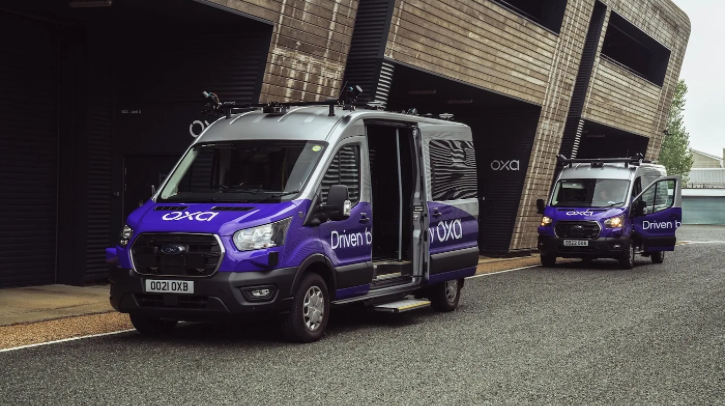Oxa announced recently that its autonomous Ford E-Transit van and minibus, powered by Oxa Driver software, had begun operations on UK and US roads. The new Ford E-Transits are the first mass-production vehicles to be converted using Oxa’s Reference Autonomy Designs (RADs). These design blueprints enable the rapid integration of autonomy on host vehicles, including ‘Driven by Oxa’ software and sensors, compute and drive-by-wire systems. ADAS & Autonomous Vehicle International recently sat down with Oxa CEO Gavin Jackson to find out more.
How many of these Ford E-Transit vehicles are currently in service and what can you tell us about each deployment?
We haven’t yet announced the customer deployments for these specific vehicles, but there are a number of passenger transportation services due to launch soon. When they do we will be able to share more information.
Each deployment has its own ODD, but Oxa Driver software is able to operate at any time of day, in many different environments. Our own vehicles driving on Oxford routes are limited up to 35mph and a trained onboard safety operator will monitor the technology, in line with current UK law.
Can you explain in more detail the key benefits of RADs?
Industry scaling and the mass production of AVs requires the combination of manufacturing and autonomy expertise, underpinned by a flexible, adaptable approach. To address this, Oxa defines and prototypes Reference Autonomy Designs (RADs), which are used by vehicle OEMs and their approved partners to produce AVs at scale, with flexible distribution and licensing models.
RADs offer a rapid route to an AD-ready vehicle by providing the blueprint for integrating autonomy on any vehicle. This includes hardware and vehicle-specific configurations of ‘Driven by Oxa’ software. Specifications, positioning and installation of the sensors, compute systems and drive-by-wire systems are optimized for each use case of autonomy and consider aspects such as total cost of ownership. A key benefit of this approach is that it leverages the rapid and ongoing development of third party hardware, such as sensor capabilities, where costs will be driven down as hardware becomes increasingly commoditized.
Crucially, RADs also enable the consistent upfitting of non-AD-ready vehicles. This allows fleet owner operators to acquire a repeatable, scalable AV from approved partners, rather than having to fund a bespoke integration on a new vehicle, or wait for lengthy development cycles. All third-party integrators (be that OEMs or specialist partners) are supported with simple installation information. This means the fleet operator can be confident that the technology is well integrated and reliable, with controlled maintenance costs and minimal downtime.
For OEMs, RADs can also slash development risks and costs when adding autonomous driving capabilities to their vehicle platforms. This approach does not undervalue the importance or complexity of AV technology; rather, it focuses on risk mitigation.
We work closely with our early customers to truly understand where autonomy will make the biggest operational impact, as they have far greater expertise in their individual sectors than we do, and they define how it fits with real business workflows. We have a highly experienced team of solutions and vehicle engineers who can then work through the product optimizations required for repeated deployments, at scale.
These early adopters are co-founders in an entirely new paradigm of mobility and transportation. Maximizing the first-mover advantage, we support those customers to hone their understanding of the transformative impact of autonomy and how they can best take advantage right now, in order to reap long-term business benefits. RADs are key to how Oxa achieves this, while also readying for scale.
Where do you see the greatest market opportunity for these vehicles?
We’re focused on customer segments that operate in planned, uniform and repeated routes, where safety and predictability are paramount. This includes sectors such as shared passenger transportation, logistics hubs, airports, ports and fulfilment centers, where routes are controlled.
We also see opportunity in large industrial asset monitoring, surveillance and predictive maintenance where our technology enhances human operations and improves safety by increasing the level of monitoring of faulty equipment and security threats.
For example, we have a variety of vehicle types working in industrial asset monitoring across refineries; wind and solar farms; passenger shuttling operations; retail yard and fulfillment center automation; as well as airport ground equipment and port automation. All these applications are viable because autonomy will solve immediate issues, helping businesses deliver vital operational gains, mitigate driver shortages, steal a march on competitors and reduce climate impacts.
Research commissioned by the SMMT last year suggests autonomous vehicles can deliver annual economic benefits as high as £66bn (US$83bn) to the UK by 2040, with an estimated 342,000 additional jobs created in the economy, of which 12,250 would be in automotive manufacturing.


